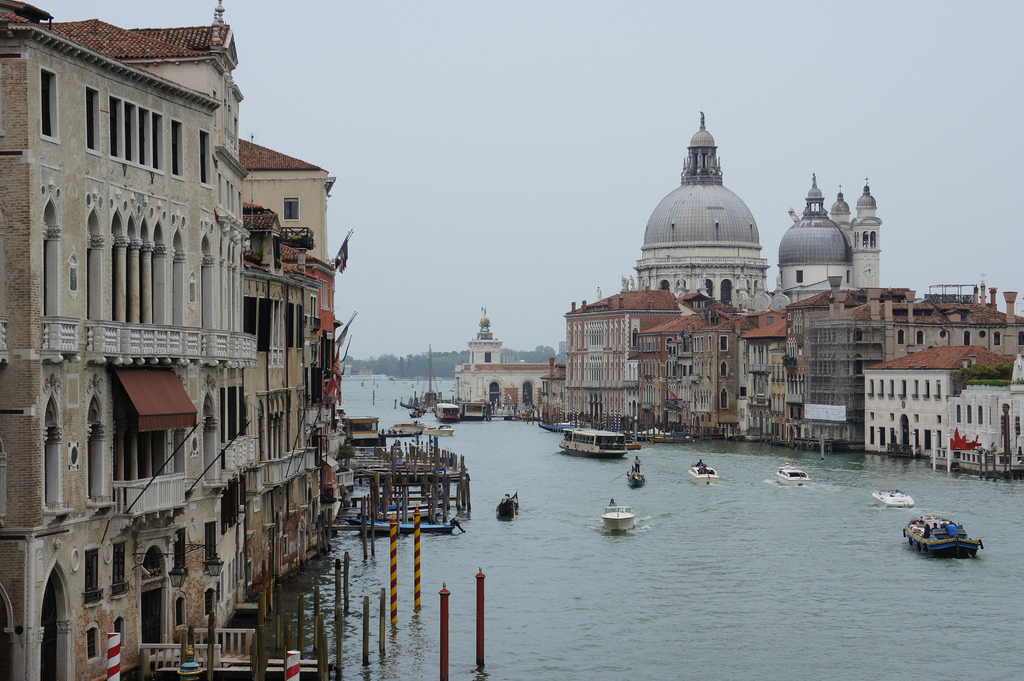Europa Nostra outlines proposals to save Venice
Fifty years after its first actions to save Venice, Europa Nostra has outlined a set of proposals to ensure a sustainable future for this cultural heritage masterpiece. In the ‘Appeal for the Saving of Venice’, approved by the Board of the organisation on 30 September, Europa Nostra advocates the implementation of an environmental plan which tackles water management, pollution, land reclamation and dredging issues in the Lagoon, as well as the adoption of financial and policy instruments to secure long-term residents and attract local businesses to the historic areas. It is also proposed that large-scale cruise ships moor outside the city and cruise tourists make a greater financial contribution to the urban upkeep, among other measures. Italia Nostra, FAI – Fondo Ambiente Italiano, Touring Club Italiano and the Association of International Private Committees for the Safeguarding of Venice have broadly endorsed the proposals.

Maintaining Venice, a UNESCO World Heritage Site since 1987, not only as a travel destination but as a community, is one of the biggest challenges. Photo: CC BY-SA 2.0, Jack G
Maintaining Venice, a UNESCO World Heritage Site since 1987, not only as a travel destination but as a community, is one of the biggest challenges.
“In the last 60 years Venice has lost two thirds of its inhabitants. The officially resident population today is less than 58,000 and still rapidly declining. Financial instruments and planning policy are needed to encourage long-term lets and incentivise local businesses,” reads the ‘Appeal for the Saving of Venice’.
“There has been a dramatic increase in the number and size of cruise ships using the port of Venice: from 206 in 1997 to 655 in 2011. Most of these ships are in excess of 100,000 gross tonnage. In 1990, around 200,000 cruise tourists visited the city. In 2011, this figure reached 1.8 million. The head of the Venice Port Authority proposed deep-dredging the Canale Contorta Sant’Andrea to bring the ships into the port of Venice without sailing through the city, but at the cost of further damaging a part of the Lagoon already much eroded by the Canale dei Petroli. An alternative and much better solution would be for the ships to moor outside the city at Marghera on the mainland side of the lagoon. A plan which lessens the environmental impact of cruise ships and their effect on the character of the city is needed. This plan should not only exclude ships of more than 40,000 tonnes from entering the city but also encourage cruise tourists to make a greater financial contribution to the upkeep of the city,” it is claimed.
“The huge increase in the number of day visitors is placing an almost impossible burden on the city, seriously affecting the quality of life of the residents and, at the same time, greatly diminishing the nature of the visitor experience. Venice urgently needs a tourism management plan,” it is argued.
Another major challenge is to preserve the ecology of the Lagoon and protect the city from the sea level rise. “The Lagoon has serious hydro-geological problems and is losing its morphology through a combination of dredging deep channels and local reclamation for industrial development. Erosion is being caused by waves from boats, particularly large cruise and container ships. Over the last 70 years the area of salt marsh has almost halved leading to a significant change in the ecology of the lagoon. Rising sea levels due to climate change is a major threat to the fabric the city. The planned mobile barriers will be able to protect Venice from acute flooding events for some decades to come, but they will not be able to deal with the chronic rise in the mean water level unless closed for long periods at a time, which cannot happen under current levels of pollution without grave damage to the Lagoon,” it is stated.
Last but not least, a suitable and efficient governance structure needs to be established. “There are 6 main bodies and several other smaller ones with responsibility for the governance of Venice. Given this complex structure, with sometimes overlapping responsibilities and party-political allegiances, and conflicting policy agendas, it is hardly surprising that decision-making is very slow, convoluted and frequently delivers poor outcomes. An overall strategic authority for Venice is therefore fundamental for the long-term conservation and sustainable future of the city,” it is concluded.






